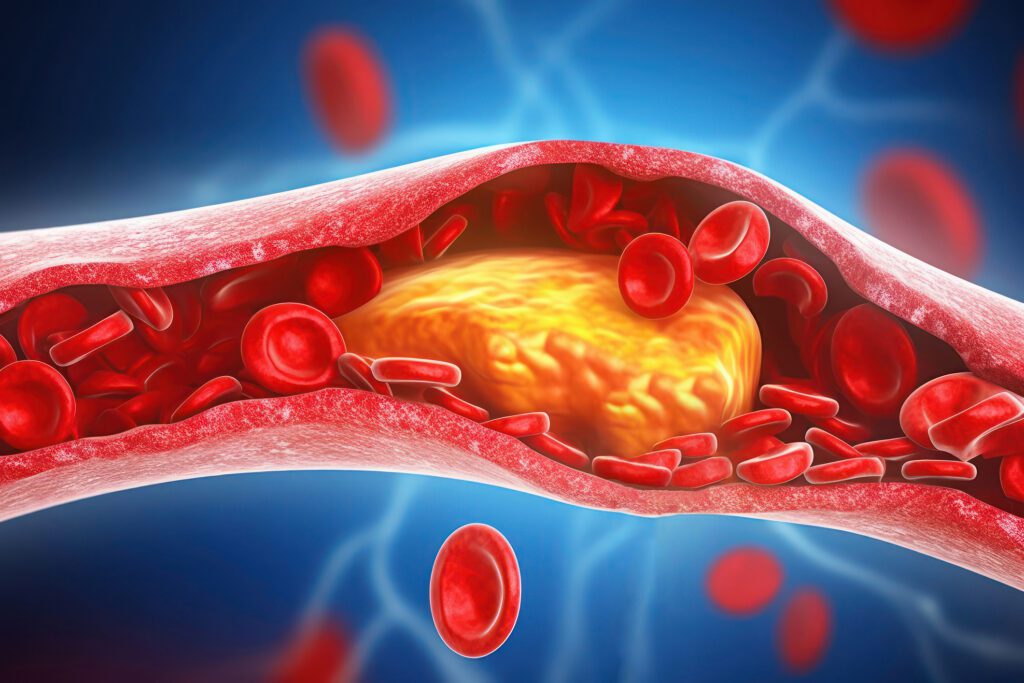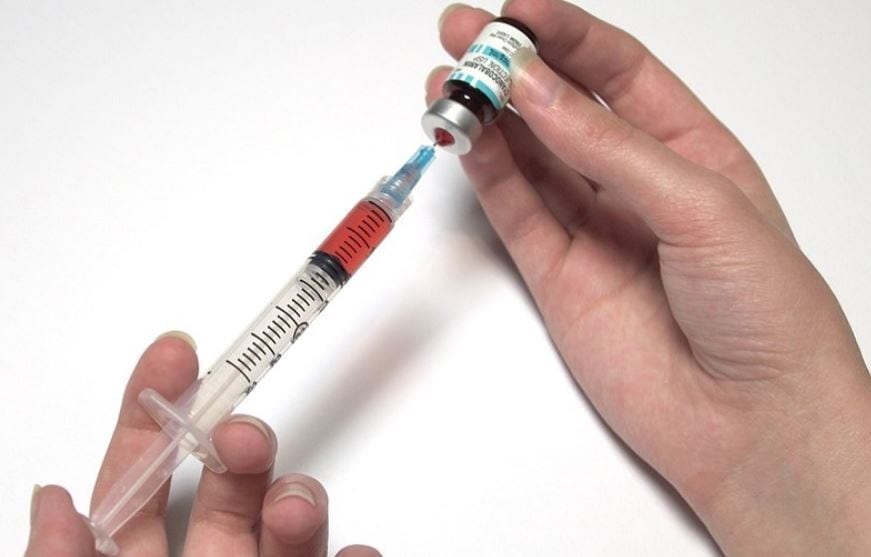Summer fun in the sun usually means more swimming, more sweating and likely wearing your damp bathing suit a little bit longer than you probably should! These conditions create the ideal environment for some very common and undesirable female genitourinary tract infections. If you are susceptible to frequent vaginal yeast infections, UTI’s (urinary tract infections) or bacterial vaginosis, or if you are pregnant, please read on!
Over the past decade, research has been exponential in exploring the role in which human microbiota and probiotics play in health and disease. Most recently, a primary focus has been to investigate the role of the microbiome in the health of the female genitourinary tract. The Vaginal Microbiome Consortium (imagine that? – a consortium just for the vagina!) at Virginia Commonwealth University are conducting a 2-stage research project funded by the National Institutes of Health. This project involves collecting vaginal samples from over 6000 women 18 years and older in the first stage, and samples from 2000 pregnant women in the second stage,3 to better understand the importance of vaginal bacteria in one’s overall health as well as for pregnancy outcomes and preterm birth.
Why your Vaginal Flora is so important!
There is a lot of new “Biome” terminology emerging in medicine. “Eubiosis” translates to our good community of bacteria existing in balance and harmony with the human body. Thus, vaginal eubiosis is largely dominated by Lactobacillusspecies of bacteria; these typically make up 90-95% of healthy vaginal bacteria and are comprised of Lactobacillus crispatus, L gasseri, L iners, and L jensenii.
Vaginal Dysbiosis, in contrast to “eubiosis”, is where there are less lactobacilli and increased polymicrobial populations that can lead to common conditions of vaginal yeast infections, UTI’s or bacterial vaginosis (where no lactobacilli are present).
Lactobacillus species in the vagina contribute to a number of health-promoting and protective factors in women. These include:
-
Production of lactic acid, which is primarily responsible for acidifying the vaginal tract. This naturally acidic environment is in and of itself an antimicrobial factor.9 L crispatus, on average, produces the highest amount of lactic acid.6
-
Keeping the “bad bugs” in check by competitive inhibition of binding of pathogenic bacteria, including those responsible for yeast vaginitis, bacterial vaginosis, urinary tract infections, and sexually transmitted infections10-14
-
Disruption of the formation of uropathogen-related biofilms, 15 of which protect pathogens and enable colonization of normal flora such as Candida spp.16 (Normal amounts of Candida spp necessary and healthy.)
-
Regulation of the vaginal immune system via epithelial cell innate immunity17
In general, clinical research with probiotics has been focused on oral use for gastrointestinal health and immune system benefits. Probiotic research for female genitourinary health has focused on intravaginal application of lactobacilis strains.
Emerging trends, however, have looked at oral probiotics to colonize the vagina, backed by a substantial amount of clinical research. Numerous trials have demonstrated that oral administration of specific strains of lactobacilli – in particular, L crispatus, L rhamnosus, L gasseri, and L reuteri – can both maintain and restore healthy genitourinary microbiota in females.23-25 One study in particular, found that oral supplementation with probiotic strains of L acidophilus and L rhamnosus in women with intermediate vaginal microbiota (having only modest levels of Lactobacillus spp versus the preferred 90-95% Lactobacillus spp) led to significant vaginal colonization of both strains and restoration of normal vaginal flora.
Vulvovaginal Candidiasis (VVC) – the clinical term for Vaginal Yeast Infection.
VVC is a fungal infection that causes irritation, burning, and pain; discharge (may be thick white clumpy discharge or watery discharge) and intense itchiness of the vagina and the vulva. Vaginal yeast infections affect as many as 75% of women at some point in their lifetimes and are often more common after increasing sexual activity, recent antibiotic use, or during times of sunbathing, excessive sweating and wearing damp clothes for longer periods of time. Vaginal yeast infections are most commonly associated with overgrowth of Candida albicans and Candida glabrata.33
In one clinical trial*, researchers explored whether probiotics could reduce the risk of recurrence of vaginal yeast infections after a standard course of treatment with the anti-fungal fluconazole.34 After initial treatment with a single dose of oral fluconazole, 59 patients with vaginal yeast infections took either an oral probiotic supplement (containing a combination of 7.5 billion CFU of L acidophilus, 6 billion CFU of Bifidobacterium bifidum, and 1.5 billion CFU of B longum) or placebo capsules daily for 6 months. Of the women who took the placebo capsules, 35.5% experienced recurrence of the vaginal yeast infection, where as the women taking probiotics only 7.2% experienced recurrence. Another clinical trial* found that oral use of L rhamnosus and L reuteri (1 billion CFU/day of each strain) led to better outcomes in women taking antifungal medications for vaginal yeast infections.35
Bacterial Vaginosis (BV) is a common vaginal infection that can sometimes be masked by or co-exist with a vaginal yeast infection.
BV can cause significant gynecological and obstetric complications. Typical symptoms may include vaginal malodor, itching, painful urination, and a thin discharge, but a substantial number of women with BV may also exhibit no symptoms at all.28 BV has been associated with pelvic inflammatory disease (PID), infections following gynecological surgery, and preterm birth.29 Estimates suggest that 40% of cases of spontaneous preterm labor and preterm birth may be associated with BV.30 Yet another reason to consider taking probiotics, especially in the third trimester of pregnancy. Although no single pathogen is known to cause BV, Vaginalis and Atopobium vaginae are commonly associated with the condition.27
Two clinical trials* have shown that the addition of probiotics to standard treatment of BV (metronidazole and tinidazole) improves the eradication of BV symptoms.31,32 Both trials used a combination of L rhamnosus and L reuteri (1 billion colony-forming units [CFU]/day of each strain) both concurrently with and after standard treatment for BV. Women in this study used probiotics for 28 days in the first trial and 30 days in the second trial. In both studies, there was a significantly higher “cure” rate in women taking the oral probiotic combination compared to the placebo group. In the first trial, high counts of Lactobacillus species were also recovered from the vagina of women treated with the oral probiotic combination.31
In clinical practice, we like to recommend easy-to-do home treatments that can help aid in re-establishing normal vaginal flora over time.
Urinary tract infections (UTIs)
Urinary tract infections (UTIs) are all too common and as many as 50% of all women will experience a UTI in their lifetime. Symptoms may include a strong persistent urge to urinate, burning and pain with urination, incomplete voiding, and cloudy, pink or strong-smelling urine. Other times, there are no symptoms. Treatments for UTI’s often fail due to the growing trend of antibiotic resistance. Escherichia coli (E. coli)is the most frequent (85-90%) pathogen causing UTI’s, followed by numerous others like Staphylococcus saprophyticus, Klebsiellaspecies, Proteus mirabilisand Enterobacter species, as well as others.44,45According to BC Biomedical Laboratories, the number of E. colipathogens resistant to trimethoprim-sulfamethoxazole (TMP-SMX) increased to 25.3% in 2008. Ciproflaxacin-resistant E. Coli is about the same, increasing from 2.25 resistance in 1998 to 22.5% resistance in 2008.46And even when nitrofurantoin does work effectively for E. Coli, should the UTI be of a Klebsiella orProteusbacteriology, the infection is 68.6% and 100%, respectively, resistant to nitrofurantoin.
Failed antibiotic treatment for UTI’s has led to increased interest in non-antibiotic therapies for recurrent UTIs. In our naturopathic practice, we tend to prefer the use of herbal combination tinctures and tablets in addition to selective probiotics over antibiotics, to improve eradication of the infection. We now know that oral probiotic supplementation has long term benefits in reducing recurrence.
A 12-month clinical trial with 252 postmenopausal women having recurrent UTIs compared a probiotic combination to TMP-SMX for the reduction of UTI recurrence.37 Women were randomized to (1) TMP-SMX, 480 mg (1 tablet at night) and 1 placebo capsule twice daily; or (2) 1 capsule containing L rhamnosus and L reuteri (1 billion CFU/day of each strain) twice daily and 1 placebo tablet at night. After 12 months, the mean number of symptomatic UTIs (clinical recurrences) was 2.9 in the antibiotic group and 3.3 in the probiotic group, compared to a mean number of symptomatic UTIs of 7.0 and 6.8 in the year prior for these groups, respectively. While clinical recurrences after the one year did not differ much between groups, the antibiotic group was found to have a more than 2-fold increase in resistance to both TMP-SMX and amoxicillin, while the probiotic group showed no increase in antibiotic resistance. The study investigators conclude “lactobacilli may be an acceptable alternative for the prevention of UTIs, especially in women who dislike taking antibiotics.”37
Pregnancy
Preterm birth is considered to be delivery before 37 completed weeks of pregnancy.38 Preterm birth comprises 11% of all live births worldwide, and its complications are estimated to cause 35% of the world’s neonatal deaths.
As mentioned earlier, BV is one of the most common risk factors for preterm birth. A recent Canadian study compared the vaginal microbiome of pregnant women who had spontaneous preterm births with pregnant women who delivered at term.40 The findings suggested that women who experienced preterm birth were more likely to show more diverse vaginal bacteria (primarily those associated with dysbiosis) and fewer lactobacilli compared to those who delivered at term. Women who delivered at term were more likely to cluster to groups with vaginal microbiota dominated by L crispatus and L gasseri.
In addition to pregnancy outcomes, the use of probiotics preterm has been associated with a decreased risk of postpartum depression and anxiety,41 gestational diabetes mellitus,42 and infant atopic dermatitis, otherwise known as eczema, (taken preterm and post-term).43
In Summary
Female genitourinary tract infections (such as BV, vaginal yeast infections, and UTIs) and preterm birth affect billions of women each year, resulting in considerable stress, health care costs and unnecessary deaths. Options for the prevention and treatment of these common conditions in conventional medicine are limited, particularly for women with recurrent infections. Clinical data support the use of oral probiotic products containing combinations of Lactobacillus strains as a safe and effective way for women to re-establish and maintain healthy vaginal microbiota. Probiotics can help to potentially reduce these infections as well as improve pregnancy outcomes.
If you would like to learn more about how to treat and prevent female genitourinary infections naturally, please call us today. We are able to offer full initial consultations, in-house urinalysis, pelvic and pap exams, as well as screening tests for bacterial culture and pathology for any suspected infections. All of our doctors have the capacity to prescribe medications and antibiotics when and if it is indicated, however, as this article summarizes, it’s probably not the first, nor the best choice.
Written by Dr. Emina Jasarevic, ND
* RDBPCT = Randomized, double-blind, placebo-controlled, clinical trial ** Content sourced and modified from NDNR 2018
References:
- Turnbaugh PJ, Ley RE, Hamady M, et al. The human microbiome project. 2007;449(7164):804-810.
- Qin J, Li R, Raes J, et al. A human gut microbial gene catalogue established by metagenomic sequencing. Nature. 2010;464(7285):59-65.
- Huang B, Fettweiss JM, Brooks JP, et al. The changing landscape of the vaginal microbiome. Clin Lab Med. 2014;34(4):747-761.
- Waigankar SS, Patel V. Role of probiotics in urogenital healthcare. J Midlife Health. 2011;2(1):5-10.
- Sirota I, Zarek SM, Segars JH. Potential influence of the microbiome on infertility and assisted reproductive technology. Semin Reprod Med. 2014;32(1):35-42.
- Ravel J, Gajer P, Abdo Z, et al. Vaginal microbiome of reproductive-age women. Proc Natl Acad Sci U S A. 2011;108 Suppl 1:4680-4687.
- Vásquez A, Jakeobsson T, Ahrmé S, et al. Vaginal lactobacillus flora of healthy Swedish women. J Clin Microbiol. 2002;40(8):2746-2749.
- Borges S, Silva J, Teixiera P. The role of lactobacilli and probiotics in maintaining vaginal health. Arch Gynecol Obstet. 2014;289(3):479-489.
- Techedjan G, Aldunate M, Bradshaw CS, Cone RA. The role of lactic acid production by probiotic Lactobacillus species in vaginal health. Res Microbiol. 2017;168(9-10):782-792.
- Gupta K, Stapleton AE, Hooten TM, et al. Inverse association of H2O2-producing lactobacilli and vaginal Escherichia coli colonization in women with recurrent urinary tract infections. J Infect Dis. 1998;178(2):446-450.
- Hillier SL, Krohn MA, Klebanoff SJ, Eshenbach DA. The relationship of hydrogen peroxide- producing lactobacilli to bacterial vaginosis and genital microflora in pregnant women. Obstet Gynecol. 1992;79(3):369-373.
- Sewankambo N, Gray RH, Wawer MJ, et al. HIV-1 infection associated with abnormal vaginal flora morphology and bacterial vaginosis. Lancet. 1997;350(9077):546-550.
- Sobel JD. Is There a Protective Role for Vaginal Flora? Curr Infect Dis Rep. 1999;1(4):379-383.
- van De Wijgert JH, Mason PR, Gwanzura L, et al. Intravaginal practices, vaginal flora disturbances, and acquisition of sexually transmitted diseases in Zimbabwean women. J Infect Dis. 2000;181(2):587-594.
- McMillan A, Dell A, Zellar MP, et al. Disruption of urogenital biofilms by lactobacilli. Colloids Surf B Biointerfaces. 2011;86(1):58-64.
- Douglas LJ. Candida biofilms and their role in infection. Trends Microbiol. 2003;11(1):30-36.
- Doerflinger SY, Throop AL, Herbst-Kralovetz MM. Bacteria in the vaginal microbiome alter the innate immune response and barrier properties of the human vaginal epithelia in a species-specific manner. J Infect Dis. 2014;209(12):1989-1999.
- Ayebo AD, Angelp IA, Shahani KM. Effect of ingesting Lactoacidophilus acidophilus milk upon fecal flora and enzyme activity in humans. Milchwissenschaft. 1980;35(12):730-735.
- O’Hanlon DE, Moench TR, Cone RA. Vaginal pH and microbicidal lactic acid when lactobacilli dominate the microbiota. PLoS One. 2013;8(11):e80074.
- Gajer P, Brotman RM, Bai G, et al. Temporal dynamics of the human vaginal microbiota. Sci Transl Med. 2012;4(132):132ra52.
- Hooton TM, Fennell CL, Clark AM, Stamm WE. Nonoxynol-9 differential antibacterial activity and enhancement of bacterial adherence to vaginal epithelial cells. J Infect Dis. 1991;164(6):1216-1219.
- Hill C, Guarmer F, Reid G, et al. Expert consensus document. The International Scientific Association for Probiotics and Prebiotics consensus statement on the scope and appropriate use of the term probiotic. Nat Rev Gastroenterol Hepatol. 2014:11(8):506-514.
- Strus M, Chimielarczyk A, Kochan P, et al. Studies on the effects of probiotic Lactobacillus mixture given orally on vaginal and rectal colonization and on parameters of vaginal health in women with intermediate vaginal flora. Eur J Obstet Gynecol Reprod Biol. 2012;163(2):210-215.
- Reid G, Bruce AW, Fraser N, et al. Oral probiotics can resolve urogenital infections. FEMS Immunol Med Microbiol. 2001;30(1):49-52.
- Petricevic L, Unger FM, Viernstein H, Kiss H. Randomized, double-blind, placebo-controlled study of oral lactobacilli to improve the vaginal flora of postmenopausal women. Eur J Obstet Gynecol Reprod Biol. 2008;141(1):54-57.
- De Alberti D, Russo R, Terruzzi F, et al. Lactobacilli vaginal colonisation after oral consumption of Respecta(Ò) complex: a randomised controlled pilot study. Arch Gynecol Obstet. 2015;292(4):861-867.
- Bradshaw CS, Tabrizi SN, Fairley CK, et al.The association of Atopobium vaginae and Gardnerella vaginalis with bacterial vaginosis and recurrence after oral metronidazole therapy. J Infect Dis. 2006;194(6):828-836.
- Klebanoff MA, Schwebke JR, Zhang J, et al. Vulvovaginal symptoms in women with bacterial vaginosis. Obstet Gynecol. 2004;104(2):267-722.
- Falagas ME, Betsi GI, Athanasiou S. Probiotics for the treatment of women with bacterial vaginosis. Clin Microbiol Infect. 2007;13(7):657-664.
- Pretorius C, Jagatt A, Lamont RF. The relationship between periodontal disease, bacterial vaginosis, and preterm birth. J Perinat Med. 2007;35(2):93-99.
- Anukam K, Osazuwa E, Ahonkhai I, et al. Augmentation of antimicrobial metronidazole therapy of bacterial vaginosis with oral probiotic Lactobacillus rhamnosus GR-1 and Lactobacillus reuteri RC-14: randomized, double-blind, placebo controlled trial. Microbes Infect. 2006;8(6):1450-1454.
- Martinez RC, Franceschini SA, Patta MC, et al. Improved cure of bacterial vaginosis with single dose tinidazole (2 g), Lactobacillus rhamnosus GR-1 and Lactobacillus reuteri RC-14: a randomized, double-blind, placebo controlled trial. Can J Microbiol. 2009;55(2):133-138.
- Vermitsky JP, Self MJ, Chadwick SG, et al. Survey of vaginal-flora Candida species isolates from women of different age groups by use of species-specific PCR detection. J Clin Microbiol. 2008;46(4):1501-1503.
- Davar R, Nokhostin F, Eftekhar M, et al. Comparing the recurrence of vulvovaginal candidiasis in patients undergoing prophylactic treatment with probiotic and placebo during the 6 months. Probiotics Antimicrob Proteins. 2016;8(3):130-313.
- Martinez RC, Franceschini SA, Patta MC, et al. Improved treatment of vulvovaginal candidiasis with fluconazole plus probiotic Lactobacillus rhamnosus GR-1 and Lactobacillus reuteri RC-14. Lett Appl Microbiol. 2009;48(3):269-274.
- Foxman B. Epidemiology of urinary tract infections: incidence, morbidity, and economic costs. Dis Mon. 2003;49:53-70.
- Beereport MA, ter Riet G, Nys S, et al. Lactobacilli vs antibiotics to prevent urinary tract infections: a randomized, double-blind, noninferiority trial in postmenopausal women. Arch Intern Med. 2012;172(9):704-712.
- Quinn JA, Munoz FM, Gonik B, et al. Preterm birth: case definition and guideines for data collection, analysis, and presentation of immunization safety data. Vaccine. 2016;34(49):6047-6056.
- Blencowe H, Cousens S, Oestergaard MZ, et al. National, regional, and worldwide estimates of preterm birth rates in the year 2010 with time trends since 1990 for selected countries: a systematic analysis and implications. Lancet. 2012;379(9832):2162-2172.
- Freitas AC, Bocking A, Hill JE, et al. Increased richness and diversity of the vaginal microbiota and spontaneous preterm birth. 2018;6(1):117.
- Slykerman RF, Hood F, Wickens K, et al. Effect of Lactobacillus rhamnosus HN001 in pregnancy on postpartum symptoms of depression and anxiety: A randomized double-blind placebo-controlled trial. EBioMedicine. 2017;24:159-165.
- Wickens KL, Barthow CA, Murphy R, et al. Early pregnancy probiotic supplementation with Lactobacillus rhamnosus HN001 may reduce the prevalence of gestational diabetes mellitus: a randomized controlled trial. Br J Nutr. 2017;117(6):804-813.
- Zuccotti G, Meneghin F, Aceti A, et al. Probiotics for prevention of atopic diseases in infants: systematic review and meta-analysis. Allergy. 2015;70(11):1356-1371.
- Nicolle L, Anderson P, Conly J et al. Uncomplicated urinary tract infection in wo Current practice and the effect of antibiotic resistance on empiric treatment. Can Fam Physician. 2006;52(5):612-618.
- Ronald A. The etiology of urinary tract infection: traditional and emerging pathogens. Am J Med. 2008; 113(1A):14S-19S
- Epidemiology Services British Columbia Centre for Disease Control. Antibiotic-resistant trends in the Province of British Columbia. August 2008. BC Centre for Disease Control Web site: http://www.bccdc.ca/NR/rdonlyres/E7AA8E38-8517-4743-ABDC-FAAC4EA0B96A/0/AntimicrobialResistanceTrendsinBC_2008.pdf. Accessed July 9, 2009.







